Amir Rajabzadeh
A Profile-Based Binary Feature Extraction Method Using Frequent Itemsets for Improving Coronary Artery Disease Diagnosis
Sep 22, 2021
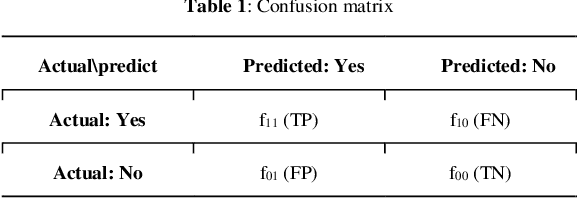
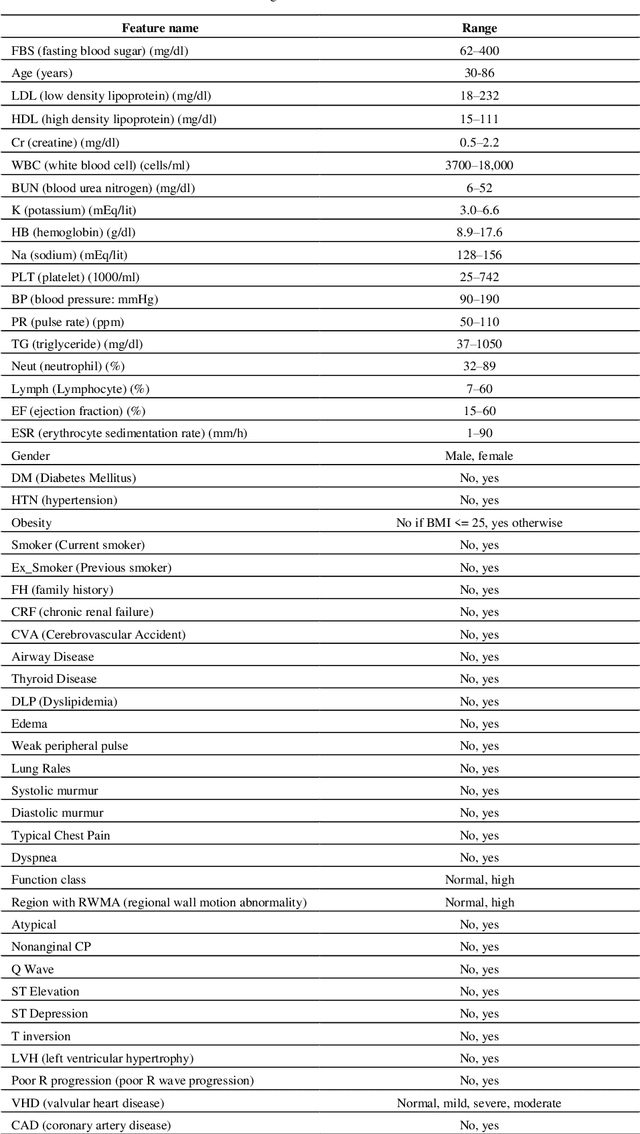

Abstract:Recent years have seen growing interest in the diagnosis of Coronary Artery Disease (CAD) with machine learning methods to reduce the cost and health implications of conventional diagnosis. This paper introduces a CAD diagnosis method with a novel feature extraction technique called the Profile-Based Binary Feature Extraction (PBBFE). In this method, after partitioning numerical features, frequent itemsets are extracted by the Apriori algorithm and then used as features to increase the CAD diagnosis accuracy. The proposed method consists of two main phases. In the first phase, each patient is assigned a profile based on age, gender, and medical condition, and then all numerical features are discretized based on assigned profiles. All features then undergo a binarization process to become ready for feature extraction by Apriori. In the last step of this phase, frequent itemsets are extracted from the dataset by Apriori and used to build a new dataset. In the second phase, the Genetic Algorithm and the Support Vector Machine are used to identify the best subset of extracted features for classification. The proposed method was tested on the Z-Alizadeh Sani dataset, which is one the richest databases in the field of CAD. Performance comparisons conducted on this dataset showed that the proposed method outperforms all major alternative methods with 98.35% accuracy, 100% sensitivity, and 94.25% specificity. The proposed method also achieved the highest accuracy on several other datasets.
A Multi-Purpose Scenario-based Simulator for Smart House Environments
May 14, 2011


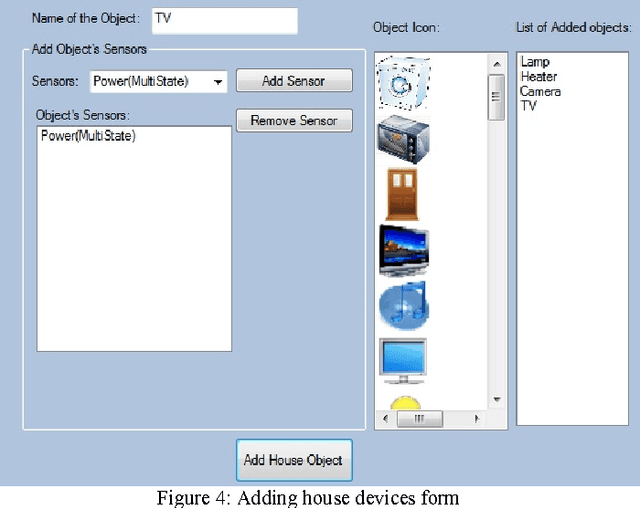
Abstract:Developing smart house systems has been a great challenge for researchers and engineers in this area because of the high cost of implementation and evaluation process of these systems, while being very time consuming. Testing a designed smart house before actually building it is considered as an obstacle towards an efficient smart house project. This is because of the variety of sensors, home appliances and devices available for a real smart environment. In this paper, we present the design and implementation of a multi-purpose smart house simulation system for designing and simulating all aspects of a smart house environment. This simulator provides the ability to design the house plan and different virtual sensors and appliances in a two dimensional model of the virtual house environment. This simulator can connect to any external smart house remote controlling system, providing evaluation capabilities to their system much easier than before. It also supports detailed adding of new emerging sensors and devices to help maintain its compatibility with future simulation needs. Scenarios can also be defined for testing various possible combinations of device states; so different criteria and variables can be simply evaluated without the need of experimenting on a real environment.
A Scenario-Based Mobile Application for Robot-Assisted Smart Digital Homes
Sep 27, 2010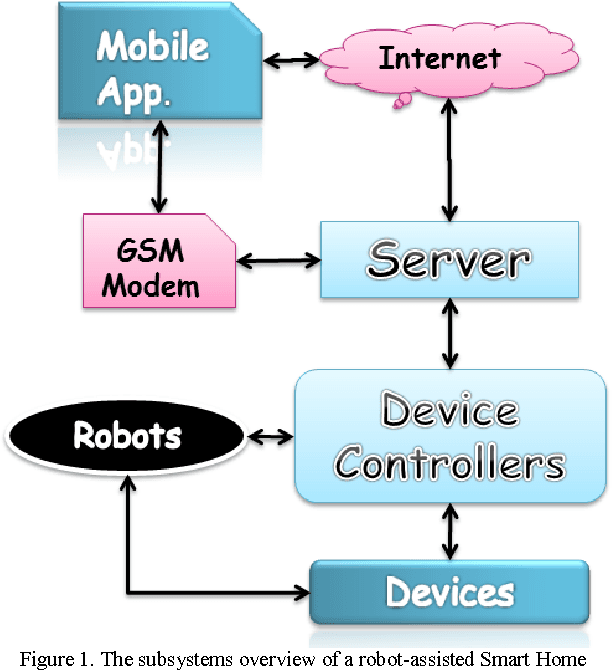
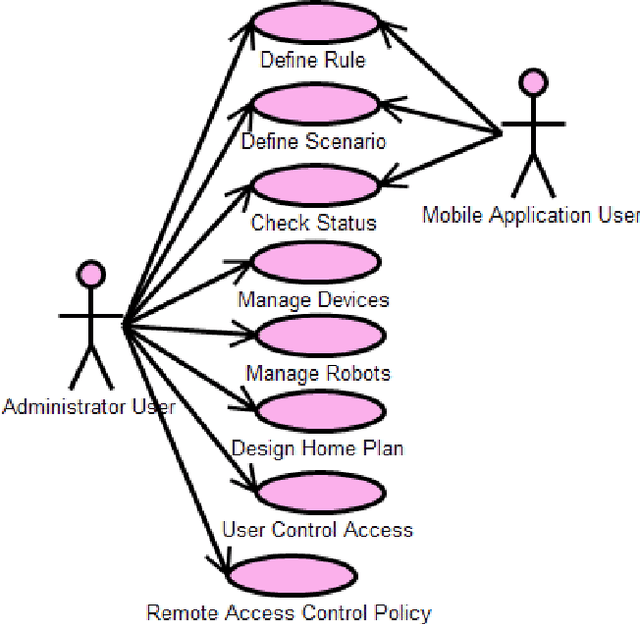
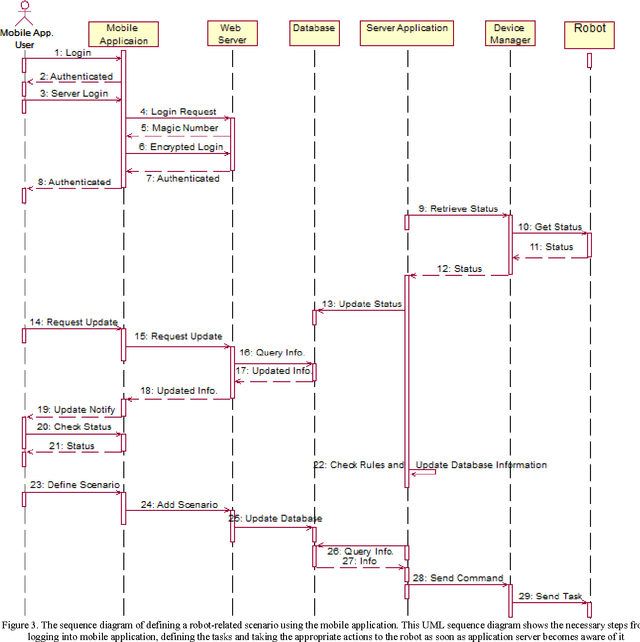
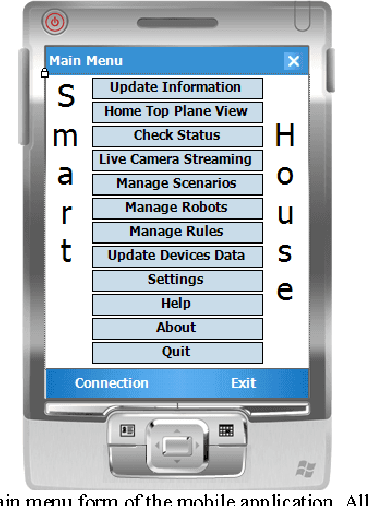
Abstract:Smart homes are becoming more popular, as every day a new home appliance can be digitally controlled. Smart Digital Homes are using a server to make interaction with all the possible devices in one place, on a computer or webpage. In this paper we designed and implemented a mobile application using Windows Mobile platform that can connect to the controlling server of a Smart Home and grants the access to the Smart Home devices and robots everywhere possible. UML diagrams are presented to illustrate the application design process. Robots are also considered as devices that are able to interact to other object and devices. Scenarios are defined as a set of sequential actions to help manage different tasks all in one place. The mobile application can connect to the server using GPRS mobile internet and Short Message System (SMS). Interactive home map is also designed for easier status-checking and interacting with the devices using the mobile phones.
* 8 pages, 8 figures, IEEE Publication format, Keywords- smart homes; mobile applications; remote home controls; automated digital homes; robot assisted at home; general packet radio service (GPRS); short message system (SMS); robot assisted at home; scenario based smart home
 Add to Chrome
Add to Chrome Add to Firefox
Add to Firefox Add to Edge
Add to Edge